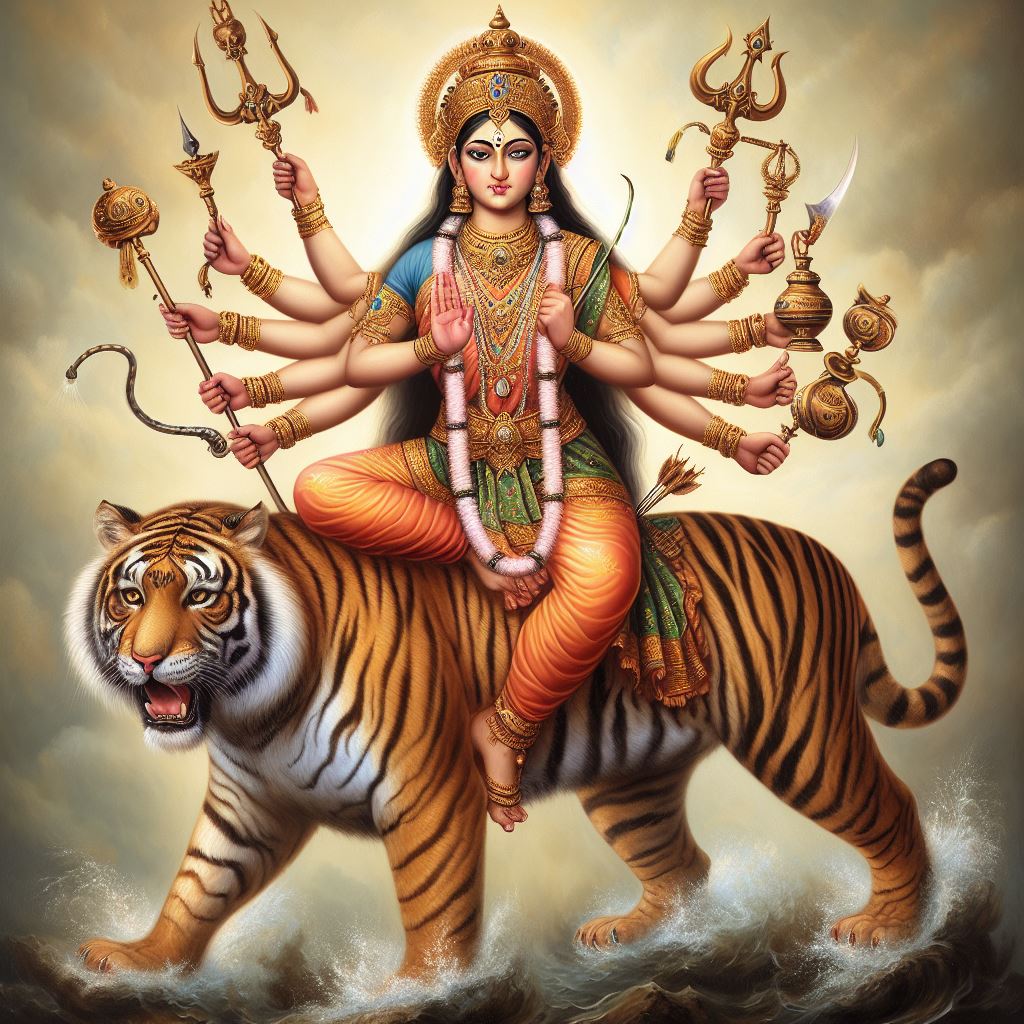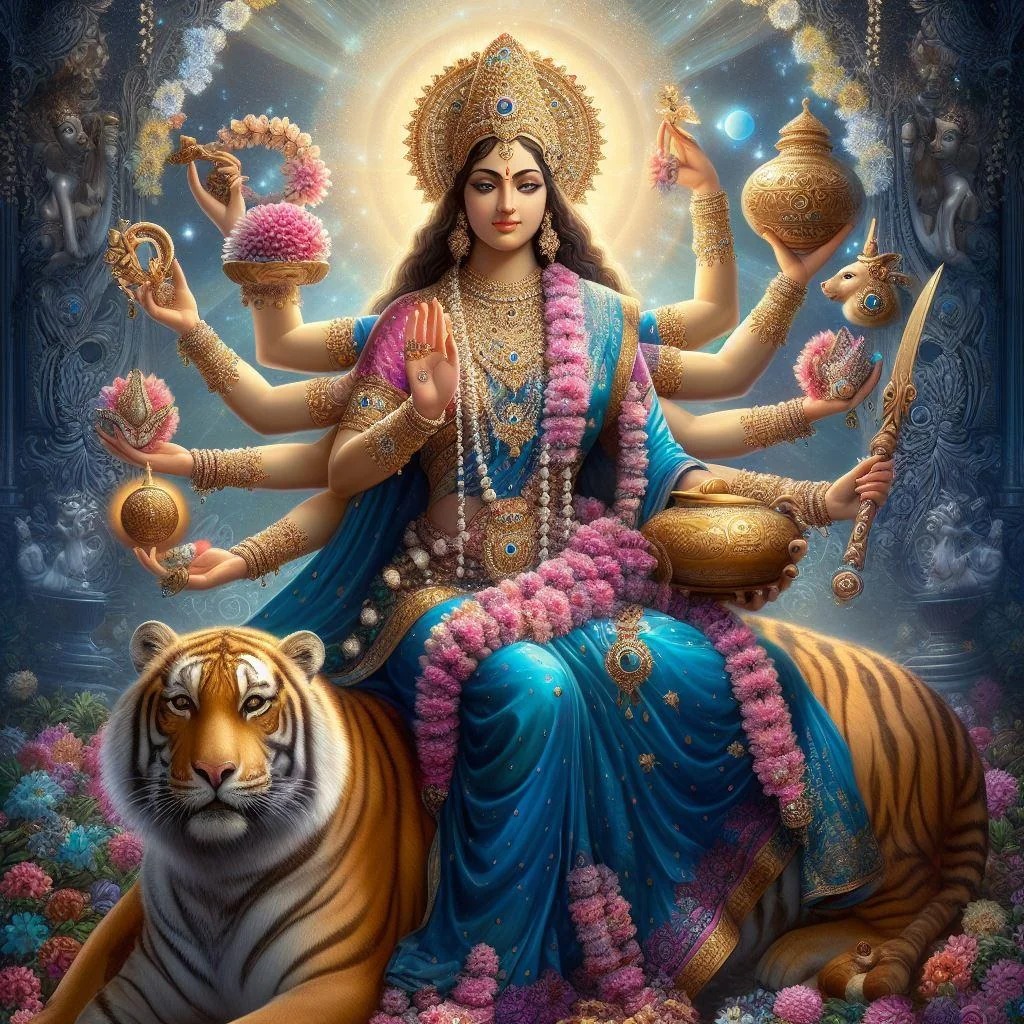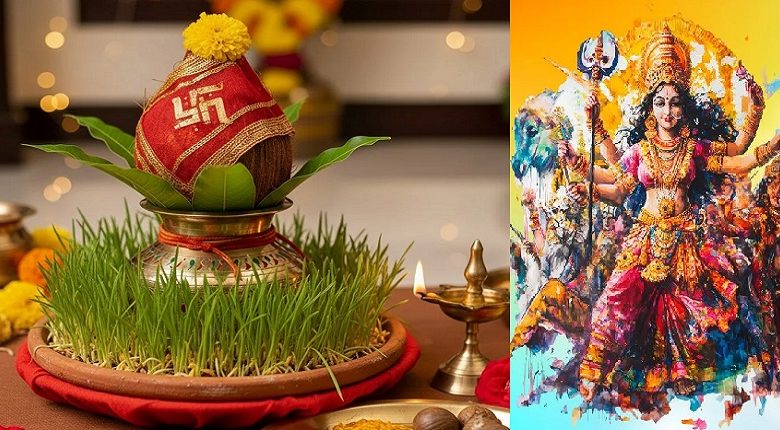
Vidushi Gaur/ New Delhi
The nine nights of Navratri unfold as a journey through devotion, faith, and culture. Each day honours one of the nine forms of Goddess Durga, Shakti or feminine celestial power, and is celebrated across India with unique customs.
The fourth day of Navratri is dedicated to Goddess Kushmanda, revered as the creator of the universe and the source of vitality. While her story is part of Hindu scriptures, her worship finds a very earthy connection in Punjab, where Navratri is intertwined with the rhythms of farming life and prayers for a bountiful harvest.

Mythology
Goddess Kushmanda, also known as the “Smiling Goddess,” is believed to have created the world with her gentle smile. According to scriptures, when darkness enveloped the universe, it was Kushmanda who radiated energy and gave form to creation. She is depicted riding a lion, with eight or ten hands holding weapons, a rosary, and a pot of nectar, symbolising both the destruction of evil and nurturing of life.
Her name, Ku (a little), Ushma (warmth/energy), Anda (cosmic egg), signifies the belief that she produced the cosmic egg with her divine energy. Worshipping her is said to bring health, strength, and wealth, as she represents the life-giving force of the sun itself.
On this day, devotees pray to Kushmanda for energy and longevity, often offering foods made with pumpkins, which carry her name.

Rituals
The day begins with Ghatasthapana puja continuing from earlier days, with devotees lighting lamps, offering flowers, fruits, and chanting mantras dedicated to Kushmanda. Milk, malpua, or sweets made of jaggery are common offerings. The color associated with Day 4 is yellow, symbolising energy, joy, and prosperity.
Fasting continues, but it is often softened with sattvic meals including milk products, fruits, and grains like samak rice. In many homes, prayers to Kushmanda are accompanied by chanting the Durga Saptashati or Devi Mahatmya, invoking her creative and nurturing power.
Navratri in Punjab
While Navratri is most popularly associated with Gujarat’s Garba or Bengal’s Durga Puja, Punjab has its own distinctive way of celebrating the festival. For Punjabis, Navratri, especially the early days, are deeply connected with agriculture and seasonal change.
In rural Punjab, Navratri coincides with the sowing season of wheat, barley, and other rabi crops. Farmers pray to the goddess for the fertility of the soil and protection of the crops. The fourth day, dedicated to Kushmanda, the life-giver, has special resonance, as she is seen as the one who ensures growth and sustenance.

One of the most striking practices in Punjab during Navratri is the sowing of jowar (sorghum) or barley seeds in a small earthen pot at home or in temples on the first day of the festival. By the fourth day, the green shoots begin to sprout, symbolising life, prosperity, and divine blessings. Families water and nurture these saplings throughout Navratri, and on the eighth or ninth day (Ashtami/Navami), the grown shoots are offered to the goddess before being immersed in rivers or distributed among devotees.
This tradition reflects Punjab’s agricultural ethos: just as the goddess nurtures the universe, devotees nurture the saplings as a prayer for healthy crops in their fields. It is a symbolic union of faith and farming.

During the nine days, many Punjabi families observe fasts, eating simple meals of kuttu flour, singhara flour, potatoes, and fruits. But alongside, the festival also brings community bonding. In gurdwaras and temples, large numbers of people gather for langars that include sattvic food, reinforcing values of sharing and equality.
By the fourth day, with crops sprouting and communities gathering, the atmosphere is one of optimism, an agricultural prayer blended with divine devotion.
Punjab’s Navratri practices are more intimate, rooted in household devotion. The focus is less on public spectacle and more on personal prayer, fasting, and farming traditions.

The fourth day in particular reflects Punjab’s agricultural rhythm as it represents hope for a good harvest, especially with the sowing season underway. The green saplings of barley are symbolic of growth and prosperity, seen as blessings of Kushmanda, and, families, especially women, come together to sing bhajans of Durga, weaving music with devotion.
READ MORE: Mand exponent Batool Begum is a living legend of Indian culture
This blending of goddess worship with crop cycles makes Punjab’s Navratri a festival that ties spirituality directly with livelihood.
